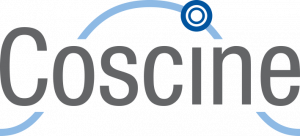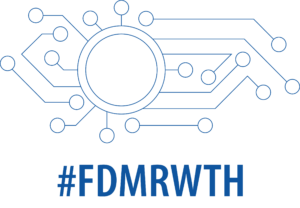Arbeiten Sie aktuell an einem großen Forschungsprojekt und nutzen dabei Coscine? Sind Sie bereits in den Endzügen und möchten die Daten mit anderen Kolleg*innen teilen, die nicht am Projekt beteiligt sind? An diesem Punkt stehen sie vor zahlreichen Optionen in Bezug auf ihre Forschungsdaten. In dieser Blogreihe möchten wir Ihnen einige der gängigsten Methoden vorstellen, mit denen Sie Ihre Daten für Personen außerhalb von Coscine zugänglich machen können. (*)
Coscine ist eine Plattform zur Verwaltung von Forschungsdaten. Sie ermöglicht es Nutzenden, gemeinsam an Forschungsprojekten zu arbeiten und trägt zur guten wissenschaftlichen Praxis bei, indem Daten inklusive zugehöriger Metadaten abgespeichert, verwaltet und nachgenutzt werden können. Als Datenverwaltungs- und Speicherplattform werden in Coscine oft Daten im Bereich von Hunderten von Gigabytes bis hin zu Terrabytes pro Projekt oder Einrichtung verwaltet. Bei solchen Datenmengen ist ein häufiges Verschieben der Daten (z. B. durch Hochladen an einen anderen Ort) nicht mehr praktikabel.
Was können Nutzende also tun?
Nutzende können Externe über deren E-Mail-Adresse zu einem Coscine-Projekt einladen und ihnen Mitgliedsrolle mit Gastrechten zuweisen. Dies ist für bis zu einem Dutzend Einladungen gut realisierbar und sinnvoll, wenn es sich um nahestehende Personen und Projektpartner handelt. Für den Austausch mit einem breiteren Publikum ist dies jedoch nicht besonders praktikabel.
Eine weitere Möglichkeit ist das Erstellen eines API-Schlüssels, um über eine Software auf Coscine zuzugreifen. Von der Weitergabe eines solchen API-Schlüssels wird jedoch dringend abgeraten, da er an das Konto der Ersteller*innen gebunden ist und den Nutzenden alle Privilegien der Ersteller*innen gewährt.
Alternativen auf Grundlage des Ressourcentyps
RDS-S3
In Coscine können RDS-S3 Ressourcen ausgewählt werden, mit denen ein direkter Zugriff auf Ihre Daten ermöglicht wird. Hierzu kann ein S3-Schlüssel oder ein externer Client genutzt werden. Durch die Freigabe dieser Schlüssel können andere Personen über einen externen Client eine Verbindung zu Ihrer S3-Ressource herstellen und Ihre Daten einsehen. Die Schlüssel gibt es in zwei Varianten: Nur-Lesen und Lesen-Schreiben. Für das Teilen von Daten mit Externen sollte der Nur-Lese-Schlüssel ausgewählt werden.
Beachten Sie jedoch, dass für RDS-S3-Ressourcen ein Speicherplatzantrag erforderlich ist. Dies ist also nur eine Option für diejenigen, die einen Antrag auf S3-Speicher gestellt und eine Bewilligung erhalten haben.
RDS-Web
Obwohl die RDS-Web-Ressourcen auf demselben Speichersystem basieren, bieten sie keinen direkten Zugriff auf die darunter liegenden Daten. Daher werden keine Schlüssel für den Zugriff auf Ihre Daten zur Verfügung gestellt. Welche alternativen Möglichkeiten Ihnen stattdessen zur Verfügung stehen, erfahren Sie im nächsten Teil dieser Blogreihe.
LinkedData
Ähnlich wie bei RDS-Web sind derzeit keine Optionen für das Teilen von Daten mit Externen verfügbar.
GitLab
Das Teilen der Daten ist über die GitLab-Repository-URL möglich. Dazu muss das jeweilige GitLab-Projekt öffentlich zugänglich sein.
Fazit
Die oben genannten Möglichkeiten umfassen die „eingebauten“ Methoden, um Daten mit Coscine öffentlich zugänglich zu machen. Diese sind für kleinere Zielgruppen ausreichend, aber nicht unbedingt geeignet, wenn Sie Ihre Daten einem breiten Publikum zugänglich machen wollen. Die hochgeladenen Daten in Coscine werden zwar tabellarisch und mit den dazugehörigen Metadaten angezeigt, allerdings mag dies unter Umständen nicht die beste Art der Präsentation sein: Für die Ansicht einer Sammlung von Bilddateien ist eine tabellarische Auflistung weniger geeignet. Neben Bilddateien profitieren auch viele andere in der Wissenschaft verwendeten Datentypen von einer individuellen Darstellung.
Deshalb stellen wir Ihnen im nächsten Beitrag dieser Reihe eine Methode vor, mit der Sie Ihre Daten mit ein wenig Aufwand, aber vielen Möglichkeiten der Datenpräsentation einem breiten Publikum auch außerhalb von Coscine zugänglich machen können. Die vorgestellte Methode deckt alle Ressourcentypen ab und erlaubt Ihnen sogar, mit etwas mehr Aufwand auch ihre Metadaten zugänglich zu machen und ggf. sogar in die Darstellung der Daten mit einzubeziehen. Um dies zu erreichen, werden wir einen Blick hinter die technischen Kulissen von Coscine werfen und erkunden, welche Möglichkeiten sich uns zusätzlich bieten, wenn wir direkt mit der Coscine API interagieren. Keine Sorge – umfassendes technisches Know-How ist für unsere Zwecke nicht erforderlich.
Mehr erfahren
Sie möchten keine News über Coscine mehr verpassen? Dann abonnieren Sie unseren Newsletter und besuchen Sie uns auf unserer Webseite.
Sie haben Fragen oder Feedback? Dann schreiben Sie eine Nachricht an das IT-ServiceDesk. Wir freuen uns auf Ihre Nachricht!
Verantwortlich für die Inhalte dieses Beitrags ist Arlinda Ujkani.
(*) Der Absatz wurde am 08.08.2024 aktualisiert.






Schreibe einen Kommentar
Du musst angemeldet sein, um einen Kommentar abzugeben.